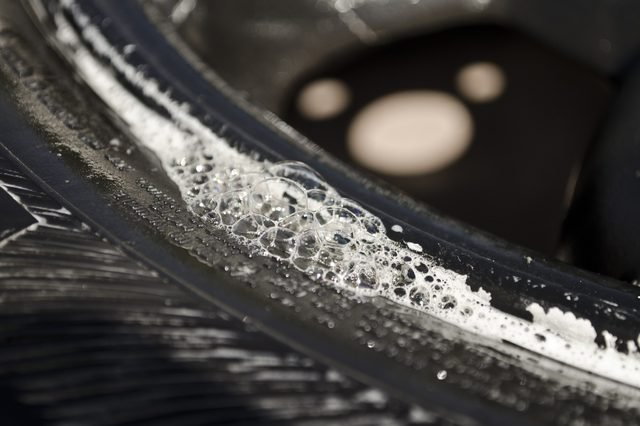Corvette: Why is My Tire Pressure Light On?
The tire pressure light is designed to warn the driver when the tires need attention. Read on to learn about some common triggers.
This article applies to the C5, C6 and C7 Corvette (1997-current).
As with any vehicle, you always want to maintain optimum tire pressure in your Corvette. Not only will you ensure that your vehicle achieves good gas mileage, which is important for long days while out on the track and better speeds due to more aggressive traction capability, but you also will get the most life out of your tires, extending the need for your next service repair appointment. If the tire pressure light flickers on, don't panic. There are a number of DIY solutions that can remedy the problem.

Materials Needed
- Owner's manual
- Quality gauge
- J-41760 magnet
- Soapy water
- Tire leak sealer (optional)
Step 1 – Check the tire pressure
Due to a drop in temperatures, you are likely to experience lower than usual tire pressure during the fall and early winter. This is likely to set off your vehicle's tire pressure monitoring system.
- You can check the tire pressure manually using a quality gauge. Since the tire pressure light is on, and is therefore an indication that your tires are not properly inflated, the best solution is simply to add more air to your tire(s).
- Always check your owner's manual for the manufacturer's recommended tire inflation for your Corvette.

Pro Tip
The tire pressure warning light is most likely to come on during a sudden rise or fall in ambient temperatures.
Now that you've added more air to your tires, per the owner's manual recommendations, the problem should be resolved. If the warning light continues to blink, and the tires have been recently rotated, proceed to Step 2, where you will learn how to reset the tire pressure monitoring system for continued safe driving.
Step 2 – Reset the tire pressure monitoring system
The transponders in each vehicle may need to be reset if the wheels were recently rotated. If you do not own a Tech 2 or equivalent scan tool, you can simply swipe a J-41760 magnet over the valve stem.
- Insert the key into the ignition, but do not start the engine. Press both the "lock" and "unlock" buttons on the access control key fob simultaneously. This will switch the vehicle into programming mode, which is what you want. You will know the system is ready when you hear the horn chirp, which should occur within about 10 seconds of both buttons being pressed.
- Move to the left front wheel. Sweep the magnet over the left front valve stem until the horn chirps again. You have just forced the LF pressure sensor to transmit the code it needs to reset the main module.
- Move (in this order) from the right front to the right rear and then left rear sensors of the vehicle. Once all four pressure readings display across the driver information center, your tire pressure monitoring system has been reset.

Pro Tip
If you are using the scan tool method, simply follow the menu prompts on the screen.
If the tire pressure light remains on, proceed to Step 3.
Step 3 – Check for leaks
When the tire has a slow leak, the air pressure light might come on every few days or after a certain number of spins.
- Take a spray bottle filled with soapy water and wet each tire.
- Check for bubbling, which is an indication of a leak.
- See a tire specialist to determine if you will need a new tire or if a tire leak sealer will suffice.

Related Discussions
- Tire Pressure Warning Light - CorvetteForum.com
- Cold Weather - CorvetteForum.com






